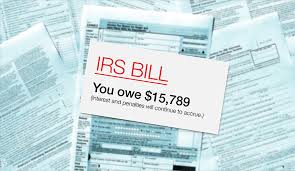According to
Law360, when the IRS' operations are fully restored, the agency will have to face a mounting set of problems that have grown while offices have been shuttered, and addressing problems with the CDP program is likely to be low on its list of priorities, according to Bob Probasco, director of the Texas A&M University School of Law's Low-Income Tax Clinic.
While the agency is currently tied up with doling out economic impact payments to mitigate the economic effects of the pandemic, and it still has to fulfill its obligations under recently passed laws such as the Taxpayer First Act and the Tax Cuts and Jobs Act, the CDP program remains vitally important, according to Caleb Smith, director of the University of Minnesota Law School's Ronald M. Mankoff Tax Clinic.
Due to The Pandemic, Many People Will Likely Be Unable To Meet Their Tax Obligations, Which Will Likely Lead To A Surge In CDP Cases Down The Road, Smith Said.
"Once we're done focusing so heavily on getting money to people, the next thing is going to be, now people can't afford to pay back taxes, and CDP will probably take an even higher priority then," he said.
An initiative known as the CDP Summit, a collaboration among private tax practitioners, law professors, directors of low-income taxpayer clinics and the IRS aimed at putting in place needed reforms to the CDP program, was launched as a result of a panel discussion at the American Bar Association Section of Taxation's 2019 May meeting on issues with the program. That effort, and government reports, have identified ways the program can be improved.
The CDP Summit has already resulted in some positive changes, according to Schmidt. After a discussion during a December low-income taxpayer representation workshop in Washington, the IRS chief counsel's office released legal advice saying requests for hearings that taxpayers incorrectly send to the wrong address would still be treated as timely filed, Schmidt said.
Since Then, However, The Initiative Has Stalled.
Some Summit Participants Took Jobs With The IRS, And
The Pandemic Has Shifted Remaining Summit
Participants' Priorities, Schmidt Said.
T. Keith Fogg, the director of the federal tax clinic at Harvard Law School's Legal Services Center, who is also involved with the summit, said he doesn't know when it will resume. For the time being, the pandemic has reduced some of the pressures on the CDP program, since the IRS has temporarily paused lien and levy enforcements through July 15 and will be slow to restart that work, Fogg said.
The summit's work so far has led to significant improvements in CDP notices, Fogg said, noting the newest version of the notice provides more information on the opportunity for a CDP. hearing. However, more needs to be done to ensure that taxpayers understand they have to act to preserve their rights to a hearing under the CDP program, he said.
A taxpayer may not raise issues in a CDP hearing if the issues have already been raised and considered at prior judicial or administrative hearings and the taxpayer meaningfully participated in those hearings, according to the national taxpayer advocate's 2019 annual report to Congress. Taylor said he'd lost three cases at the appellate level arguing taxpayers should have the opportunity to litigate their liabilities in CDP hearings if they haven't already had the opportunity to challenge them in court.
Not Many Taxpayers Make Use of CDP, Though.
According To The National Taxpayer Advocate's 2019 Report, Between 2003 And 2019 A Mere 1.44% of Taxpayers Who Received CDP Notices Requested A Hearing, and
Less Than 1% Filed A Petition In The Tax Court.
While the number of CDP cases may increase due to the pandemic, participation rates are not likely to follow suit, Santos said.
"The absolute number of CDP hearings might rise, but I'm not sure that the rate of CDP hearings requested as a percentage of all lien and levy notices will rise," he said.
Whether more hearings occur will depend on how IRS collection staffers manage their workload, Taylor said. He's not sure, he said, how nuanced an approach the agency will take to collection work starting July 15, but he was confident more taxpayers would find themselves struggling.
"You're going to have a lot of folks who have new tax problems or have a new inability to manage tax problems that were being managed," he said, adding that many people who weren't previously in the position of having to choose between paying taxes, and food or housing costs, will find themselves there.
Covid 19 Turn Your Life Upside Down?
Can't Pay Your Taxes?
Contact the Tax Lawyers at
Marini & Associates, P.A.
for a FREE Tax Consultation
or Toll Free at 888-8TaxAid (888 882-9243)















